
The Janaza Prayer is a solemn Islamic funeral ritual, a collective obligation, performed to seek forgiveness for the deceased and comfort for the grieving. It involves four Takbirs, specific supplications, and concludes with Salaam, emphasizing communal unity and divine mercy. A downloadable Janaza Prayer Dua PDF guide is available for easy reference, ensuring proper recitation and understanding of this sacred obligation.
Significance of Janaza Prayer in Islam
The Janaza Prayer holds profound significance in Islam as a collective obligation, fostering unity and compassion among believers. It is a solemn ritual performed to seek forgiveness and mercy for the deceased, ensuring their soul is comforted in the afterlife. This prayer also serves as a reminder of life’s transience, urging the living to reflect on their faith and actions. The congregation’s participation emphasizes the community’s shared responsibility and support during grief. The specific supplications, including the Janaza Prayer Dua, are recited to invoke divine mercy and blessings. This prayer is a beautiful expression of Islamic values, combining spiritual devotion with communal solidarity, and is a vital part of Muslim funeral traditions.
Overview of the Funeral Prayer Ritual
The Funeral Prayer Ritual, or Salat al-Janazah, is a distinctive Islamic prayer performed for the deceased, characterized by its simplicity and absence of bowing or prostration. It begins with the intention to pray for the deceased, followed by four Takbirs (saying “Allahu Akbar”). After the first Takbir, the Thana and Fatiha are recited. The second Takbir is followed by Durood Shareef, and the third by a heartfelt dua for the deceased. The prayer concludes with the fourth Takbir and Salaam. This ritual emphasizes standing in rows, facing the Qibla, and maintaining a state of purity. The absence of Ruku and Sujud highlights the prayer’s focus on supplication and seeking divine forgiveness, making it a unique and meaningful part of Islamic funeral customs.

Steps to Perform Janaza Prayer
The Janaza Prayer involves four Takbirs, recitation of Thana and Fatiha, Durood Shareef, and a heartfelt dua for the deceased. It concludes with Salaam, emphasizing communal unity and divine forgiveness.
Preparation for the Prayer
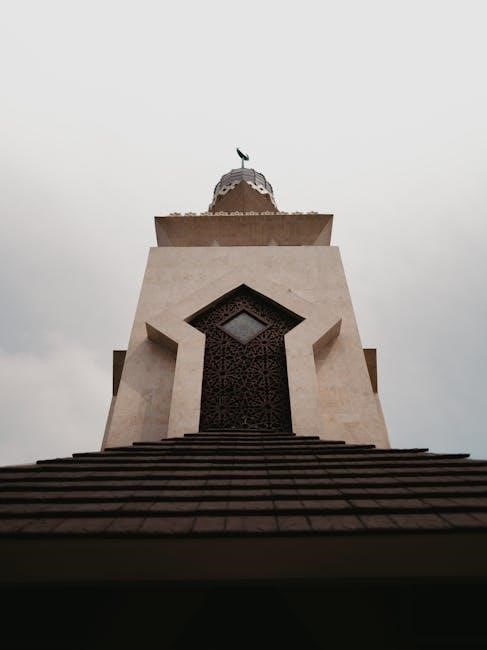
Preparation for the Janaza Prayer involves several essential steps to ensure the ritual is performed with dignity and respect. Relatives and friends should be informed about the death and the timing of the prayer. The deceased must be washed (Ghusl) and shrouded in clean, perfumed cloth, with males wrapped in three white sheets and females in additional covering. The body should be transported to the cemetery or prayer location if necessary. Participants must ensure they are in a state of purity, with proper Wudu and clean attire. The Imam leads the congregation, standing in front of the deceased, aligning with their waist for males and chest for females. These steps ensure the prayer is conducted respectfully and in accordance with Islamic traditions.
Intention and Initial Takbir
The Janaza Prayer begins with a sincere intention to seek Allah’s pleasure and forgiveness for the deceased. The Imam initiates the prayer by reciting the first Takbir (Allahu Akbar), raising his hands in the usual manner, and folding them in front. Followers silently repeat the Takbir and mimic the Imam’s actions. The intention must be clear: to perform the prayer for the deceased, seeking divine mercy and forgiveness. This step is crucial as it sets the tone for the rest of the prayer, emphasizing communal unity and devotion. The absence of Azan or Iqamah distinguishes this prayer from others, focusing solely on supplication for the departed soul.
Recitation of Thana and Fatiha
Following the first Takbir, the Imam recites the Thana, a glorification of Allah, seeking refuge from evil. This is followed by the recitation of Surah Al-Fatihah, the opening chapter of the Quran, which is mandatory in every prayer. Both the Imam and the followers recite these silently, emphasizing the divine connection and seeking blessings for the deceased. The Thana and Fatiha are foundational to the prayer, reinforcing the purpose of the gathering: to implore Allah’s mercy and forgiveness for the departed soul. This step highlights the importance of Quranic recitation in Islamic rituals, ensuring a sacred and meaningful commencement of the Janaza Prayer.
Second Takbir and Durood Shareef
After the second Takbir, the Imam recites Durood Shareef, a divine benediction upon the Prophet Muhammad (peace be upon him). This step is crucial as it connects the prayer to the Prophet’s teachings and seeks his intercession. The congregation remains silent, reflecting on the blessings of Allah and the Prophet. Durood Shareef is a Sunnah practice, emphasizing reverence and gratitude. It is typically recited in Arabic, with translations available in guides like the Janaza Prayer Dua PDF. This phase of the prayer serves as a reminder of the Prophet’s guidance and the community’s unity in faith, reinforcing the spiritual essence of the Janaza Prayer.
Third Takbir and Dua for the Deceased
Following the third Takbir, the Imam recites a heartfelt Dua specifically for the deceased, seeking Allah’s forgiveness, mercy, and guidance. This Dua is a pivotal moment in the prayer, focusing on the soul’s journey to the afterlife; The congregation remains silent, reflecting on the supplication. The Dua often includes phrases like, “Allahumma ighfir lihayyina wa mayyatina” (O Allah, forgive our living and our dead). This step emphasizes the community’s collective appeal for divine compassion. The Imam’s supplication is a Sunnah practice, highlighting the importance of intercession and communal support. A detailed recitation of this Dua can be found in the Janaza Prayer Dua PDF, ensuring accurate and reverent performance during the funeral rites.

Fourth Takbir and Salaam
The Janaza Prayer concludes with the fourth Takbir, after which the Imam performs the Salaam. Turning his head to the right, he says, “As-salamu alaykum wa rahmatullah,” and then to the left, repeating the same phrase. This act signifies the end of the prayer, emphasizing peace and blessings. The congregation follows the Imam’s lead, ensuring unity in the ritual. The Salaam is a vital closing gesture, reflecting the community’s collective appeal for divine peace. The Janaza Prayer Dua PDF provides clear guidance on this final step, ensuring the prayer is completed with proper etiquette and intention. This moment underscores the importance of communal unity and spiritual closure in the funeral rites.

Janaza Prayer Dua
The Janaza Prayer Dua is a heartfelt supplication seeking forgiveness and mercy for the deceased. It is recited after the fourth Takbir, emphasizing divine compassion and peace. A Janaza Prayer Dua PDF guide is available for easy access, ensuring proper recitation and understanding of this sacred supplication.
Specific Dua Recited During Janaza Prayer
The specific dua recited during the Janaza Prayer is a heartfelt supplication seeking forgiveness and mercy for the deceased. It is recited after the fourth Takbir and includes the following words: “Allahummaghfir lihayyina wa mayyitina wa shahidina wa ghaibina wa sagirina wa kabirina wa zakarina wa unthana.” This dua asks Allah to forgive all living and deceased Muslims, emphasizing compassion and divine mercy. The prayer also includes a supplication for the deceased, requesting guidance and peace. These supplications are a crucial part of the Janaza Prayer, reflecting the Islamic emphasis on communal support and spiritual upliftment. A Janaza Prayer Dua PDF guide provides the exact Arabic text and translation, ensuring proper recitation and understanding of this sacred ritual.
Meaning and Interpretation of the Dua
The dua recited during the Janaza Prayer holds profound spiritual significance, reflecting the Islamic values of compassion, unity, and divine mercy. It is a collective plea to Allah, seeking forgiveness for both the living and the deceased. The supplication “Allahummaghfir lihayyina wa mayyitina wa shahidina wa ghaibina wa sagirina wa kabirina wa zakarina wa unthana” translates to a request for pardon for all Muslims, regardless of their presence, age, or gender. This inclusivity underscores the idea of a united Muslim Ummah. The dua also emphasizes the belief in the Hereafter, seeking ease and mercy for the deceased on their journey to the divine judgment. Understanding this dua deepens the spiritual connection during the funeral prayer, fostering a sense of shared responsibility and empathy among the congregation.
Importance of Dua in the Funeral Prayer
The dua in the Janaza Prayer is a vital act of worship, offering spiritual solace and divine mercy for the deceased. It serves as a collective plea for forgiveness, uniting the Muslim community in seeking Allah’s compassion. The supplication strengthens the bond between the living and the departed, emphasizing shared faith and responsibility. Reciting the dua also provides emotional comfort to the grieving family, reminding them of divine grace and eternal life. The Janaza Prayer Dua PDF guides ensure accurate recitation, preserving the integrity of this sacred tradition. By engaging in this act, believers reaffirm their trust in Allah’s mercy and seek blessings for both the deceased and themselves, fostering a deeper connection to their faith and community.

Downloadable Resources
Janaza Prayer Dua PDF guides offer convenient access to step-by-step instructions and supplications, ensuring accurate recitation and understanding of the funeral prayer rituals and their significance.
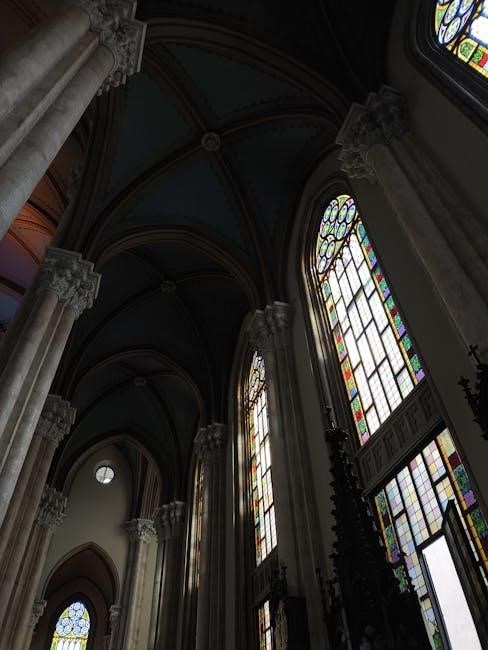
A downloadable Janaza Prayer Dua PDF provides a comprehensive guide for performing the funeral prayer, including the Arabic text, English translations, and transliterations. These resources are designed to facilitate easy understanding and recitation of the specific supplications and rituals associated with Salat al-Janazah. The PDF typically includes the four Takbirs, the Thana, Surah Fatiha, Durood Shareef, and the final Dua for the deceased. Many Islamic websites offer these guides for free, ensuring accessibility for Muslims worldwide. The clear formatting and step-by-step instructions make it an invaluable tool for individuals seeking to perform the prayer correctly. These PDFs are often printable, allowing worshippers to carry them during funerals or refer to them during prayers.
Benefits of Using a PDF Guide
Using a Janaza Prayer Dua PDF offers numerous benefits, ensuring clarity and ease in performing the funeral prayer. These guides provide accurate Arabic text, English translations, and transliterations, making them accessible to all, regardless of language proficiency. The PDF format allows for easy sharing, downloading, and printing, enabling worshippers to carry the guide during funerals. Many resources are free, democratizing access to proper Islamic funeral practices. The structured layout ensures followers can recite supplications correctly, minimizing errors. Additionally, these guides often include step-by-step instructions, helping individuals understand the sequence of the prayer. They also serve as a valuable reference for learning and teaching others, fostering community support and shared spiritual growth.
Where to Find Reliable PDF Resources
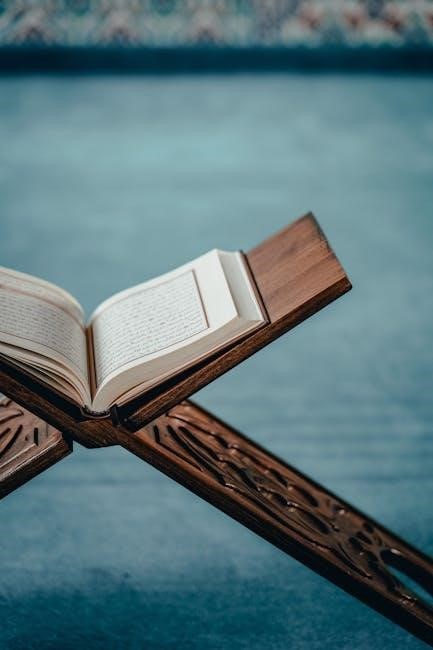
Reliable Janaza Prayer Dua PDF resources can be found on trusted Islamic websites and platforms. Websites like Islamic Bulletin and Dawah materials offer authentic guides, ensuring accurate Arabic text, translations, and step-by-step instructions. Many mosques and Islamic centers provide downloadable PDFs for free, catering to both beginners and experienced worshippers. Additionally, platforms like al-dawah.dk and horbap.com host comprehensive guides, verified by scholars, making them ideal for educational purposes. For convenience, these resources are often easily accessible and free to download, allowing Muslims worldwide to perform the prayer with confidence and correctness.
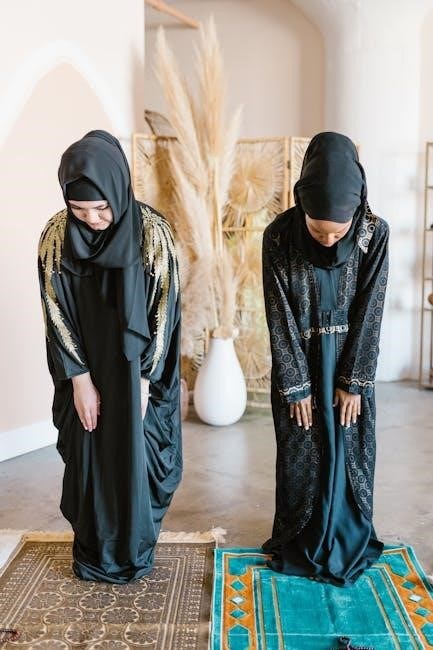
Different Perspectives and Practices
Cultural variations exist in performing the Janaza Prayer, such as differences in standing positions for male and female deceased, while maintaining the core rituals and supplications. The Imam’s role is central, leading the congregation in unison, and ensuring adherence to Islamic traditions. Participation of men, women, and children varies across communities, reflecting diverse interpretations of funeral prayer protocols. These practices highlight the unity in purpose despite differences in execution, emphasizing the collective obligation and spiritual significance of the prayer.
Variations in Janaza Prayer Across Cultures
The Janaza Prayer, while maintaining its core rituals, exhibits cultural variations worldwide. In some traditions, the Imam stands in front of the deceased’s waist for males and chest for females. Congregational lines often vary, with men forming the first row, followed by children and women in some communities. Certain cultures incorporate additional supplications or slight differences in the prayer’s sequence. Despite these variations, the essence of seeking forgiveness and divine mercy remains consistent. The availability of Janaza Prayer Dua PDF resources has further facilitated understanding and adherence to these practices, ensuring unity in purpose across diverse cultural interpretations. These variations reflect the adaptability of Islamic rituals while preserving their spiritual significance.
Role of the Imam in Leading the Prayer
The Imam plays a central role in leading the Janaza Prayer, ensuring the congregation follows the correct rituals. He initiates each Takbir aloud, guides the recitation of Thana, Fatiha, Durood Shareef, and the final Dua. The Imam’s position varies slightly depending on the gender of the deceased; for males, he stands before the waist, and for females, before the chest. His leadership helps maintain uniformity and focus among the participants. Resources like the Janaza Prayer Dua PDF often outline these responsibilities, emphasizing the Imam’s duty to lead with clarity and devotion, thereby facilitating a collective appeal for divine forgiveness and mercy for the deceased.
Participation of Men, Women, and Children
In the Janaza Prayer, men, women, and children are encouraged to participate, though their arrangement follows specific guidelines. Men typically stand in the front rows, followed by children, and then women, ensuring modesty and focus. The Imam leads the congregation, and all participants follow his actions and recitations. Children are allowed to join, fostering early engagement with Islamic rituals. While women’s participation is permitted, their attendance may vary based on cultural practices. The Janaza Prayer Dua PDF often includes instructions for all participants, emphasizing unity and collective supplication for the deceased. This inclusive yet organized approach reflects the communal nature of the prayer, ensuring everyone can contribute to seeking divine mercy and forgiveness.
Additional Information
The Janaza Prayer includes essential rules and etiquette, ensuring respect and dignity for the deceased. A downloadable Janaza Prayer Dua PDF provides detailed guidance for proper observance.
Rules and Etiquette for the Funeral Prayer
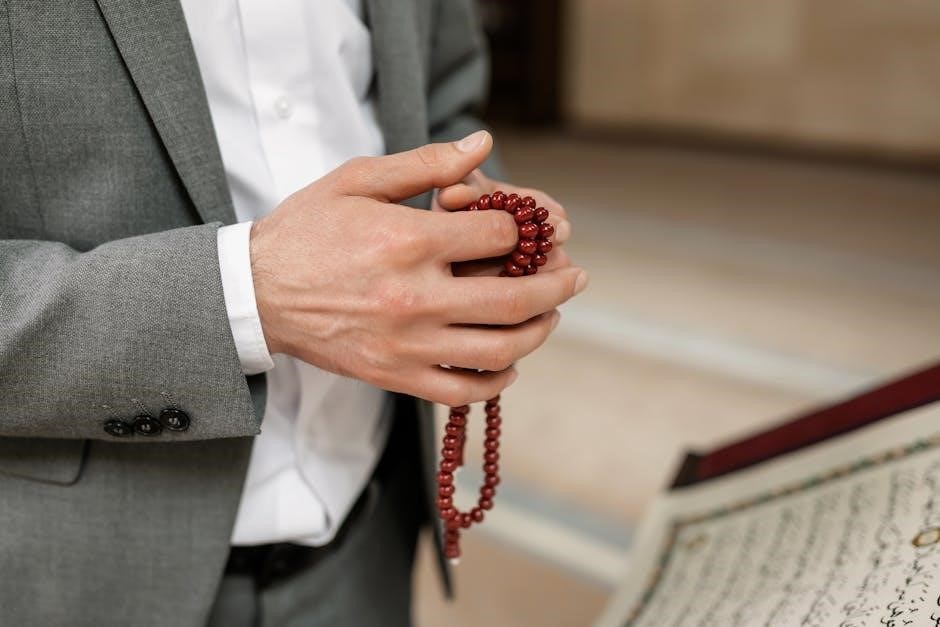
The Janaza Prayer requires strict adherence to Islamic etiquette to ensure respect and dignity for the deceased. Participants must maintain purity through Wudu, dress modestly, and face the Qibla. The prayer is performed in congregation, with rows forming behind the Imam. It is obligatory to stand for those able, while the disabled may sit. The prayer consists of four Takbirs, recitation of the Thana, Fatiha, Durood, and specific supplications. No Ruku or Sujud is performed, emphasizing the unique nature of this prayer. Silence and focus are essential during the recitations. Following the Imam’s lead is crucial, and latecomers should complete any missed portions. The prayer concludes with Salaam, turning the head to the right and left. A downloadable Janaza Prayer Dua PDF guide provides detailed instructions for proper observance.
Common Mistakes to Avoid During Janaza Prayer
One common mistake during Janaza Prayer is neglecting the proper intention or forgetting to face the Qibla. Some participants may incorrectly perform Ruku or Sujud, which are not part of this prayer. Others might skip essential supplications or recite them out of order, leading to an incomplete prayer. Additionally, talking during the prayer or not following the Imam’s lead disrupts the congregation. It is also a mistake to omit the four Takbirs or fail to end with Salaam. A Janaza Prayer Dua PDF guide can help prevent these errors, ensuring the prayer is performed correctly and respectfully. Adhering to these guidelines maintains the sanctity and unity of the congregation during this solemn ritual.


